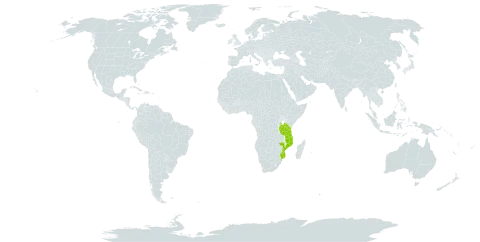Corolla 3.8–5 cm long, tube orange to red, more yellow over vents, lobe tips darker orange to red; buds narrow, terminal swelling slight, 4 mm long; tube slender, slightly broadened upwards, 2.2–3.5 cm long, with a short V-slit; lobes erect, linear-spathulate, slightly hardened inside.
Petiole 1–6 mm long; lamina coriaceous, dark green above, paler beneath, 7–16 × 2–6 cm, lanceolate to ovate-elliptic, acuminate, cuneate at base, slightly sinuate at edges, with 5–8 pairs of lateral nerves.
Flowers 2–3 per umbel in each axil and crowded at older thickened nodes; peduncle obsolete, the bracts arising from cupular sockets formed by the pedicel; bract 1.5–2 mm long, cupular.
Stamen filaments transversely corrugate; tooth subulate to 1.5 mm long or often reduced to a small ledge; anthers 2.5–3 mm long.
Stems spreading to 1 m or so, whole plant glabrous; twigs slightly compressed, soon thickened.
Calyx 3 mm long, tubular, erose.
Receptacle 1.5–2 mm long.
Berry not seen.

